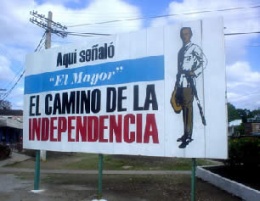3.3.1 Main figures of political oratory between 1868 and 1878

The effectiveness of political oratory is defined by its power to appeal, and this in turn is determined in part by the aesthetic richness of the message and its ability to anchor itself in the conscience. Art appeals to suggestion rather than rational thought, although without neglecting the narrative thread. Many Cuban orators left behind memorable literary pieces—in addition to those that were lost or never reached the archives—that succeeded in igniting the impetus of an entire people.
In this sense, among the most important speakers of the jungle (generally the main heroes) – taking into account only the texts and not the gestures and vocal modulation or any other extra-literary element, important without a doubt for a study that transcends these frameworks – was undoubtedly the Father of the Nation, Carlos Manuel de Céspedes (1819 – 1874), who knew how to adapt to different audiences: among conspirators, when giving freedom to his slaves, before the House of Representatives and at the head of his troops.
Before the conflict began, on August 3, 1868, at the San Miguel de Pompa Council, he forcefully expressed the need to undertake the battle as soon as possible: “Gentlemen: the hour is solemn and decisive. The power of Spain is outdated and eroded; if it still seems strong and great to us, it is because we have been contemplating it on our knees for three centuries: Let us rise!”
Ignacio Agramonte (1841–1873) also possessed great oratorical talents, which he used to further his vision of radicalizing the Revolution without compromising. The independence movement had a distinctly romantic bent in his thinking. Since this figure is mentioned, it is essential to mention his correspondence with his wife, Amalia Simone, in which he displays a lyricism that would not fully find its place in his political speeches.
For his part, Antonio Zambrana (1846–1922) was a renowned figure in oratory, even known as the Tribune of ’68. However, the current view is somewhat different from that initial image. He is, however, credited with drafting, together with Ignacio Agramonte, the Magna Carta of the Republic, which is also of some literary interest. His texts are replete with effective devices and a pronounced lyricism that sometimes conceals a less firm ideological position, as his later militancy in the Autonomist Party would demonstrate.
Rafael Morales y González (1845–1872) was also apparently a skilled orator, according to those who had the opportunity to hear him. He earned a bachelor’s degree in Civil and Canon Law in 1868 and participated in the gatherings at the Havana Lyceum. He joined the Mambi troops, becoming a member of the Assembly of Representatives and authoring several bills. He used the nom de guerre Moralitos, and for his oratorical talents, he was also known as “Pico de oro.”
In addition to these outstanding figures, oratory was sometimes carried out by military leaders without much academic or cultural training, but who, through their example and their conviction for independence, managed to transmit revolutionary enthusiasm and achieve their stated political goals.








